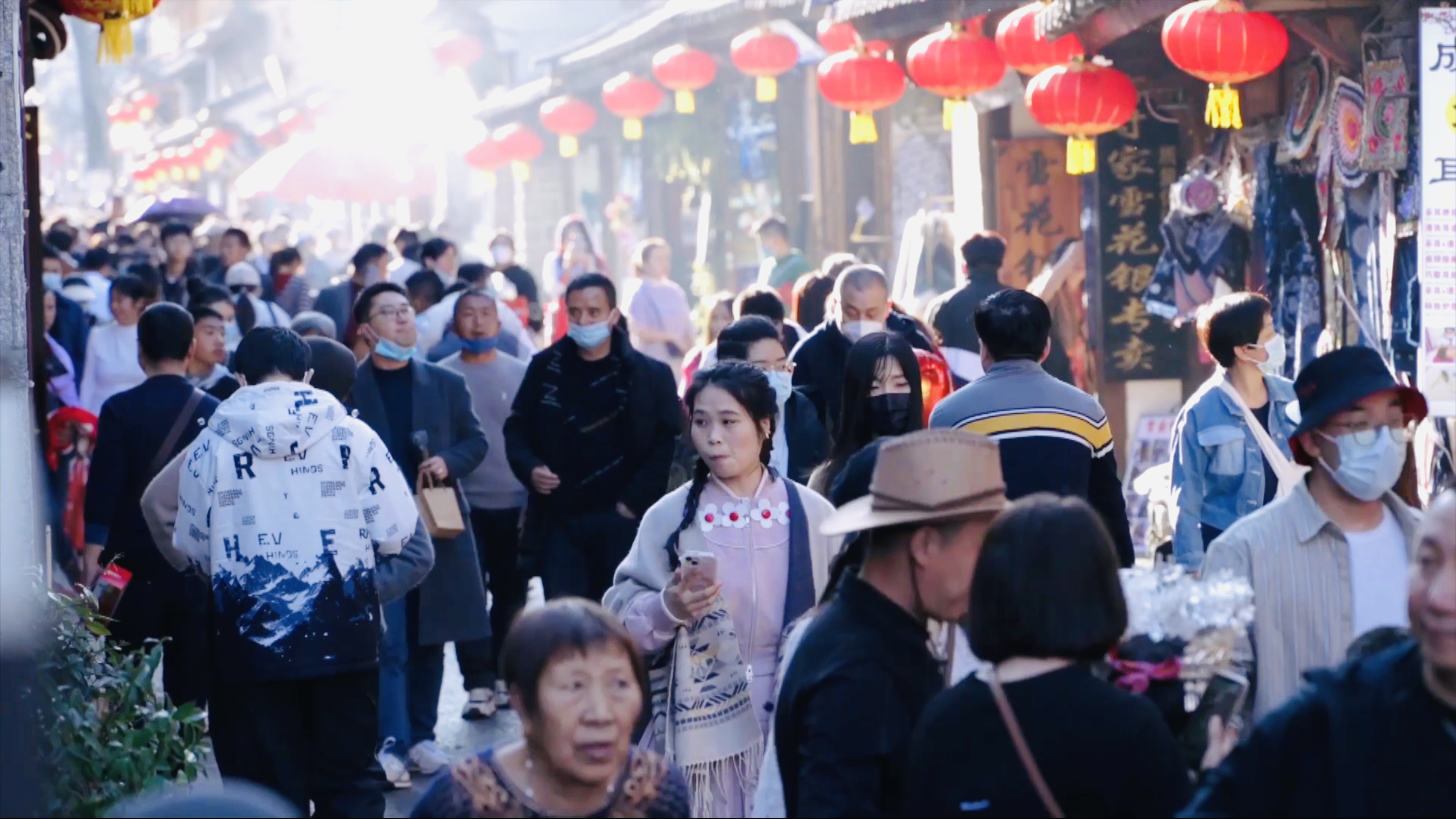02:44

Tourism in southwest China's Yunnan Province, one of the most sought-after tourist destinations in the country, rebounded during the Spring Festival holiday after the country relaxed its COVID-19 control restrictions.
Data released by the Yunnan Provincial Department of Culture and Tourism shows that more than 45 million trips were made to the province during the holiday, which lasted from January 21 to 27, representing a year-on-year growth of some 245 percent.
According to the department, more than 38.4 billion yuan (some $5.7 billion) in revenue was generated, about 32 percent higher than in 2019.

A night market in Xishuangbanna of Yunnan Province is bustling with tourists during the Spring Festival holiday. /CGTN
A night market in Xishuangbanna of Yunnan Province is bustling with tourists during the Spring Festival holiday. /CGTN
"We booked a hostel several days ahead of the holiday, as we anticipated there would be too many visitors, and so it is," said Wang Jia, who spent the holiday in Dali, a city known for its natural beauty, the unique Bai culture and leisurely lifestyle.
"It's great to see so many people celebrate the Spring Festival here. It's very lively," said the visitor from east China's Jiangsu Province.
Dai Xiaoshuai, a hostel owner in Dali, said business was booming."Our rooms were almost full every day."
The long-lost hustle and bustle is a signal that the city is regaining vitality, a trend which is shared with many other cities.
Lijiang has also been on the "must-visit" list of many people. In the "old town" – a UNESCO-listed world heritage site – folk performances by local Naxi people brought a special festive atmosphere. At night it was a different scene, and another experience.
"Before the policy adjustment on COVID control, the daily visits to the Old Town were about 30,000, and during the holiday, the number has increased to 230,000. And the visits to the Yulong Snow Mountain have grown from 2,000 to 30,000," said He Libin, head of the Lijiang Culture and Tourism Bureau.

Residents of the Naxi ethnic group in Lijiang City perform their unique dance. /CGTN
Residents of the Naxi ethnic group in Lijiang City perform their unique dance. /CGTN
As well as these hot spots, some rural areas have also welcomed a deluge of tourists. Laodabao, a small village inhabited by people of the Lahu ethnic group in Pu'er City, embraced streams of visitors over the week.
For the past decade, local distinctive performances, combining centuries-old Lahu cultural elements with guitar playing, have made the once under-privileged village known to the outside world and helped locals lift themselves out of poverty. But the COVID-19 pandemic has kept visitors out in the past three years.
"I am so happy. I haven't seen so many tourists in our village for three years. We can showcase our culture to more people again," Li Naluo, a villager, told CGTN.
Yunnan shares a long border with Laos, Myanmar and Vietnam. Some border cities such as Ruili, once under strict management to prevent cross-border COVID cases, are also starting to welcome visitors.
According to local tourism administrations, more than 370,000 visitors traveled to Ruili during the holiday, a sharp increase compared to the same period last year.
Ruili Port, the largest land port between China and Myanmar, has fully resumed operations for passengers and duty-free shopping at the border has become a hit.
Many tourism industry practitioners believe that the boom during the week-long holiday is just a good start, and the market will continue to pick up with more policy support from the government.